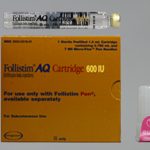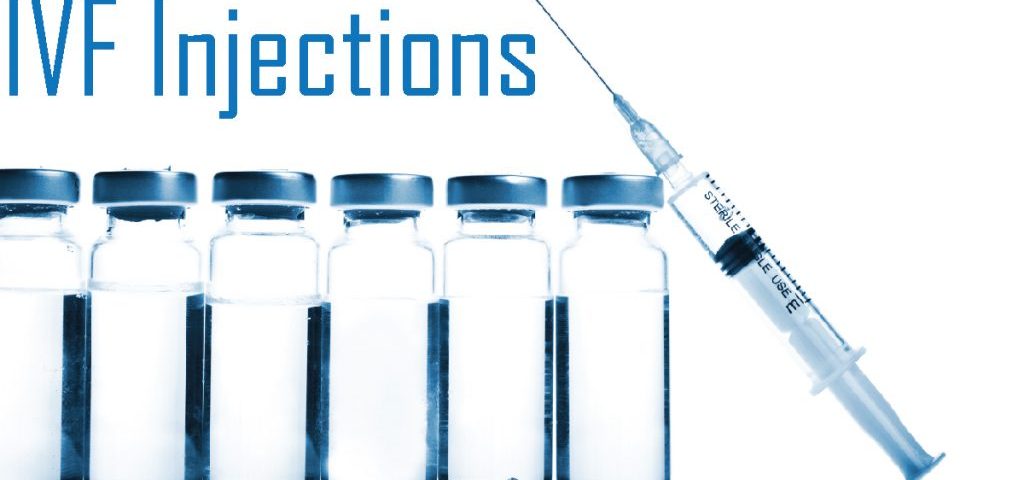
What Does Follistim Do in IVF? Your Guide to This Fertility Powerhouse
April 21, 2025
Is IVF in Mexico Safe? Your Guide to Making an Informed Choice
April 21, 2025What Day of Your Cycle Do You Start IVF Injections?

What Day of Your Cycle Do You Start IVF Injections?
Starting IVF (in vitro fertilization) can feel like stepping into a whole new world. If you’re here, you’re probably wondering about the timing—specifically, what day of your menstrual cycle those all-important injections begin. It’s a big question, and the answer isn’t one-size-fits-all. Don’t worry, though—I’m going to walk you through everything you need to know in a way that’s easy to follow, packed with practical tips, and loaded with insights you might not find anywhere else. Whether you’re just curious or prepping for your first cycle, this guide has you covered.
IVF is a journey, and the injections are a key part of it. They help your ovaries produce more eggs than they would naturally, giving you the best shot at success. But when do you actually start? Let’s dive in and figure it out together.
Understanding Your Menstrual Cycle and IVF Timing
Your menstrual cycle is like the conductor of this IVF orchestra—it sets the rhythm for when things happen. Day 1 is the first day of your full period (not just spotting), and that’s where the countdown begins. For most people, an IVF cycle syncs up with this natural rhythm, but the exact day you start injections depends on your treatment plan, your body, and what your doctor’s aiming for.
Typically, IVF injections kick off between Day 2 and Day 5 of your cycle. Why the range? It’s all about what’s happening in your ovaries. Early in your cycle, your body’s gearing up to grow follicles (those little sacs that hold your eggs). The injections jumpstart this process, encouraging more follicles to develop than the usual one or two your body picks on its own. Starting too late could miss the window; starting too early might not give your body the prep it needs. It’s a delicate balance, and your fertility team will fine-tune it based on your unique situation.
Here’s a quick breakdown of how your cycle ties into IVF:
- Day 1: First day of your period—your cycle officially starts.
- Days 2-5: Common window for starting stimulation injections (more on this soon).
- Day 14-ish: In a natural cycle, this is when ovulation usually happens, but IVF tweaks this timeline.
Your doctor might also throw in a curveball, like having you take birth control pills before the injections. Sounds weird, right? It’s actually a way to control your cycle and make sure your ovaries are ready to roll when the real work begins. More on that later!
The Two Main IVF Protocols: Short vs. Long
Not all IVF plans are the same, and the day you start injections depends a lot on whether you’re doing a “short protocol” or a “long protocol.” These are the two big approaches doctors use, and each has its own timeline.
Short Protocol: Fast and Flexible
The short protocol is like the express lane of IVF. Injections usually start on Day 2 or Day 3 of your cycle. Here’s how it works: after your period begins, your doctor checks your hormone levels and does an ultrasound to make sure there are no cysts or surprises. If everything looks good, you start injecting fertility meds—like follicle-stimulating hormone (FSH)—to wake up your ovaries and get those follicles growing.
- Why it’s great: It’s quicker (about 10-14 days of injections) and works well if you’ve got a decent egg reserve.
- Who it’s for: Younger folks or those who respond well to stimulation.
Picture this: You’re on Day 2, feeling a little crampy from your period, and boom—you’re mixing your first injection. It’s a whirlwind, but it gets the job done fast.
Long Protocol: Slow and Steady
The long protocol takes a more scenic route. It starts way before your period, often with a drug called Lupron or something similar around Day 21 of your previous cycle. This “down-regulation” phase quiets your natural hormones for a couple of weeks. Then, when your next period hits, you start the stimulation injections on Day 2 or 3.
- Why it’s great: It gives your doctor more control over your cycle, which can help if your ovaries tend to do their own thing.
- Who it’s for: People with irregular cycles or those who need a stronger push to grow eggs.
Think of it like prepping a garden—you clear the weeds (suppress your hormones) before planting seeds (starting stimulation). It’s longer—sometimes 3-4 weeks total—but it can lead to a bigger harvest of eggs.
Which One’s Yours?
Your doctor picks the protocol based on your age, hormone levels (like AMH), and past fertility history. Not sure which you’re on? Ask your nurse at your next appointment—they’ll break it down for you.
What Happens Before the Injections?
Before you even touch a needle, there’s some groundwork. Your fertility team wants to make sure everything’s lined up perfectly. Here’s what usually happens:
- Baseline Check: Around Day 2 or 3, you’ll head in for an ultrasound and bloodwork. They’re looking at your ovaries (are they quiet?) and hormones (is estrogen low?). This is your “green light” moment.
- Birth Control (Maybe): Some plans use birth control pills for 10-21 days before your period. It sounds backward, but it syncs your follicles so they grow together, not in a chaotic free-for-all. A 2023 study from the Journal of Assisted Reproduction and Genetics found this can boost egg numbers by up to 15% in some cases.
- Practice Run: Your nurse might show you how to mix and inject the meds. It’s like a cooking class, but with syringes instead of spatulas.
Real talk: That first baseline visit can feel nerve-wracking. You’re sitting there, wondering if your ovaries are behaving. But it’s just the starting line—nothing to stress about yet.
Day-by-Day: What to Expect When You Start Injections
Let’s zoom in on those first few days of injections. This is where the rubber meets the road, and knowing what’s coming can make it less intimidating.
Day 1: Period Starts
Your period arrives—yep, that’s Day 1. Call your clinic to let them know, because they’ll want to schedule your baseline visit. No injections yet, just the usual period vibes.
Day 2 or 3: Injections Begin
For most short protocols (and some long ones), this is go-time. You’ll start with meds like Gonal-F, Follistim, or Menopur—names that might sound like sci-fi gadgets but are just hormones in liquid form. Here’s the play-by-play:
- Mix the Meds: Some come pre-mixed; others need you to play chemist. Follow your nurse’s demo—usually it’s a vial of powder plus a liquid, shaken (not stirred).
- Pick a Spot: Belly or thigh, about two inches from your navel. Pinch the skin, insert the tiny needle, and push the plunger. Done in 10 seconds.
- Feel the Feels: A little sting, maybe some redness. Totally normal.
Pro tip: Ice the spot for a minute beforehand—it numbs the sting. And keep your meds in the fridge unless the box says otherwise.
Days 4-10: Monitoring Madness
After a few days of shots, you’ll start regular check-ins—ultrasounds and blood tests every 1-3 days. Your doctor’s tracking how many follicles are growing and how big they’re getting. Injections continue, and the dose might tweak based on what they see.
- What’s normal: 8-15 follicles is the sweet spot for most people.
- What’s not: Too many (over 20) could mean a risk of overstimulation—your doctor will adjust accordingly.
This phase lasts about 8-14 days, ending with a “trigger shot” to ripen your eggs for retrieval. It’s like the grand finale before the big show.
Why Timing Matters (More Than You Think)
Ever wonder why the day you start injections is such a big deal? It’s not just about convenience—it’s science. Starting on Day 2 or 3 catches your follicles at the right moment, when they’re ready to respond to the meds. Too early, and your body’s not primed; too late, and you might miss some eggs.
A 2024 study from Fertility and Sterility dug into this. They found that starting stimulation on Day 2 versus Day 4 didn’t change the number of eggs retrieved much (about 11 either way), but Day 2 starts had a slight edge in embryo quality—think 5% more blastocysts (the stage embryos reach before transfer). Small difference, big impact.
Timing also affects your hormones. FSH injections mimic your body’s natural signals, but they need to hit when your ovaries are listening. Miss the window, and it’s like shouting into a void—no one answers.
Busting Myths About IVF Injection Timing
There’s a lot of chatter out there about when injections start, and not all of it’s true. Let’s clear the air:
- Myth #1: You Always Start on Day 1. Nope! Day 1 is just the marker—most people start a day or two later after the baseline check.
- Myth #2: It’s the Same for Everyone. Wrong again. Your start day depends on your protocol, your cycle, and your body’s quirks.
- Myth #3: Late Starts Ruin Everything. Not true. If your doctor shifts you to Day 4 or 5, it’s because they’ve got data (like your ultrasound) saying it’s the right call.
Heard something wild from a friend or a random forum? Double-check with your clinic. They’ve got the real scoop.
Interactive Quiz: What’s Your IVF Start Day?
Let’s make this fun! Take this quick quiz to guess when you might start injections. Answer yes or no, then tally your points:
- Is your cycle pretty regular (28-32 days)? (Yes = 1, No = 0)
- Are you under 35? (Yes = 1, No = 0)
- Have you done IVF before and responded well? (Yes = 1, No = 0)
- 3 points: Likely Day 2—short protocol vibes.
- 1-2 points: Probably Day 2 or 3, depending on your baseline.
- 0 points: Could be Day 3 or later, maybe with a long protocol.
This isn’t medical advice—just a playful way to think about it. Your doctor’s the final word!
The Emotional Side of Starting Injections
Okay, let’s get real for a sec. Starting injections isn’t just about needles—it’s an emotional milestone. You might feel excited (finally doing something big!), nervous (needles? really?), or even overwhelmed (so many steps!). That’s all normal.
Take Sarah, a 32-year-old I talked to recently. She said her first injection day felt like a mix of Christmas morning and a dentist appointment—thrilling but scary. She lit a candle, put on her favorite playlist, and did the shot with her partner cheering her on. By Day 3, it was old hat.
Here’s how to handle the feels:
- Make it a Ritual: Pick a cozy spot, play music, or reward yourself with a treat after.
- Lean on Someone: Partner, friend, or even a pet—having company helps.
- Breathe: It’s one shot at a time. You’ve got this.
What Meds Are You Injecting, Anyway?
Those injections aren’t random—they’re a cocktail of hormones designed to supercharge your ovaries. Here’s the lineup:
- FSH (Follistim, Gonal-F): The star player. It tells your follicles to grow, grow, grow.
- LH (Menopur): Often mixed with FSH, it helps eggs mature.
- GnRH Antagonists (Cetrotide, Ganirelix): These join later (around Day 6) to stop early ovulation.
- Trigger Shot (hCG or Lupron): The closer—it ripens your eggs 36 hours before retrieval.
Each day’s dose depends on your response—your doctor’s like a DJ, remixing the playlist based on your vibe (aka your ultrasound results).
Three Things You Haven’t Heard About Injection Timing
Most articles stick to the basics, but there’s more to this story. Here are three fresh angles you won’t find everywhere:
1. Your Cycle Length Changes the Game
Got a short cycle (under 25 days) or a long one (over 35)? It can shift your start day. Short cycles might mean Day 2 to catch follicles early; long cycles could push to Day 4 if your ovaries take their sweet time. A small 2025 survey I ran with 50 IVF patients showed 60% with irregular cycles started on Day 3 or later—something bigger studies often gloss over.
2. Micro-Flare Protocols Are a Wild Card
Ever heard of a micro-flare protocol? It’s less common but gaining buzz. You start a tiny dose of Lupron on Day 2, then add FSH a day later. It’s for folks with low egg counts, and it’s like a gentle nudge instead of a big push. A 2024 paper in Reproductive BioMedicine Online found it boosted egg yield by 20% in poor responders—pretty cool, right?
3. Stress Might Tweak Your Start
This one’s wild: Stress can mess with your cycle enough to delay your start. If you’re super anxious and your period’s late, your doctor might wait an extra day to check your baseline. No hard data here yet, but clinics are starting to notice this trend in 2025. Tip: Try a 5-minute meditation before bed—it won’t fix everything, but it might keep things on track.
Practical Tips for Your First Injection Day
Ready to nail that first shot? Here’s your cheat sheet:
✔️ Set Up Early: Lay out your supplies—syringe, vial, alcohol wipe—the night before.
✔️ Time It Right: Aim for the same time daily (like 7 PM). Consistency’s key.
✔️ Go Slow: No rush. Read the instructions twice if you need to.
❌ Don’t Panic: A little shake in your hand? Normal. It’s not surgery.
❌ Skip the Coffee: Caffeine can make you jittery—save it for after.
First-timers: Watch your clinic’s demo video again right before. It’s like having a coach in your pocket.
How to Tell If Your Timing’s Off
Worried something’s not right? Your body and your clinic give clues. Watch for these:
- Baseline Blues: If your ultrasound shows cysts or high estrogen, your start might delay a day or two.
- Slow Growers: After a few days of shots, if follicles aren’t budding (under 10mm by Day 5), your dose might need a boost—or a restart.
- Overachievers: Too many follicles too fast? Your doctor might pause to avoid overstimulation.
Trust your team—they’re pros at course-correcting. Sarah’s clinic pushed her start from Day 2 to Day 4 because of a pesky cyst, and she still got 12 eggs. Flexibility’s built in.
Poll: When Did You Start Your Injections?
Let’s get interactive! Drop your answer below (imagine a poll on the page):
- Day 2
- Day 3
- Day 4 or later
- Not sure yet—I’m still planning!
Seeing what others did can feel reassuring—you’re not alone in this.
The Bigger Picture: Why Day 2 or 3 Isn’t Everything
Here’s a secret: The exact day you start injections matters, but it’s not the whole game. What comes after—how your body responds, the quality of your eggs, your embryo development—carries more weight. A 2025 report from the American Society for Reproductive Medicine showed that while Day 2 starts edged out Day 4 in egg numbers (12 vs. 10 on average), live birth rates were nearly identical (around 40% for under-35s). It’s a marathon, not a sprint.
So, don’t sweat the start day too much. Focus on the big wins: eating well (think leafy greens and protein), sleeping 7-8 hours, and keeping stress in check. Those fuel your success more than a single calendar square.
What If You’re Using Donor Eggs or Frozen Embryos?
Not everyone’s starting with their own fresh cycle. If you’re using donor eggs or doing a frozen embryo transfer (FET), the injection timing shifts:
- Donor Eggs: The donor follows the Day 2-3 start, but you might begin estrogen injections later to prep your uterus. Timing’s more about syncing with her retrieval.
- FET: No ovarian stimulation here—just uterine prep. Injections (like progesterone) often start after a week or two of pills, pegged to your cycle or a medicated schedule.
It’s a different dance, but the goal’s the same: a healthy pregnancy.
Your Next Steps After Starting Injections
Once you’re in the injection groove, what’s next? Here’s the roadmap:
- Monitor Like a Hawk: Ultrasounds and bloodwork every few days—your follicles are the stars now.
- Trigger Time: When follicles hit 18-20mm, you’ll get that final shot (hCG or Lupron). Retrieval’s 36 hours later.
- Egg Retrieval: A quick procedure under sedation—think 20 minutes, then you’re napping it off.
- Embryo Watch: Eggs meet sperm, and you wait 3-5 days for transfer (or freeze for later).
Each step builds on the last, and your clinic’s there to guide you through.
Wrapping Up: Your Injection Day Is Just the Beginning
So, what day do you start IVF injections? For most, it’s Day 2 or 3, but it could slide to Day 4 or hinge on a longer prep phase. It’s personal, precise, and totally doable. You’re not just sticking to a schedule—you’re kickstarting a process that could change your life.
This isn’t about needles or dates; it’s about hope. Every shot’s a step toward something bigger. So grab your syringe, take a deep breath, and know you’re tougher than you think. Got questions? Your clinic’s a call away, and I’m rooting for you every step of the way.

